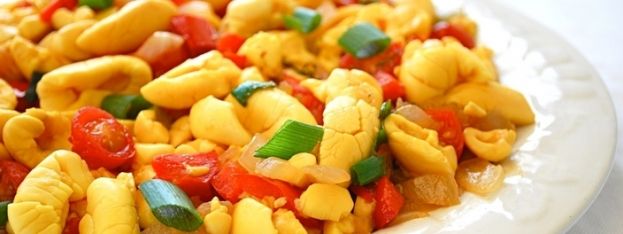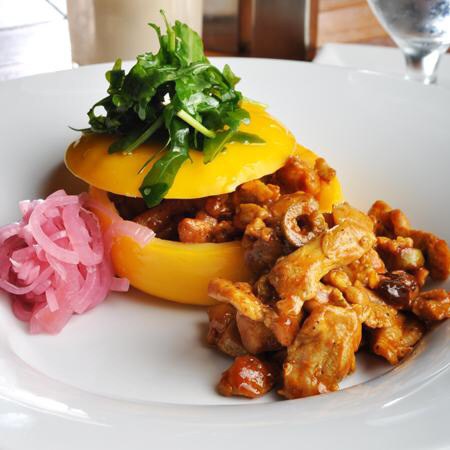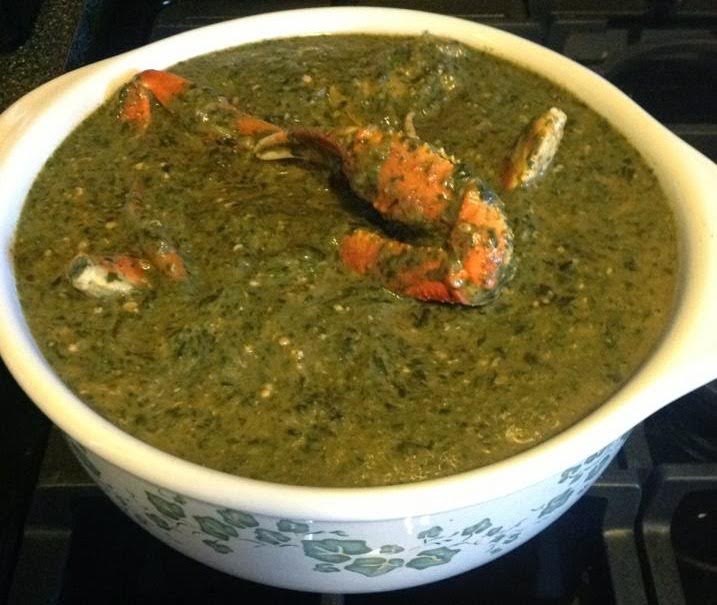
Caribbean National Dishes
Jan 26, 2017
Most Caribbean nations have traditional special dishes that reflect their unique historical cultural influences of cooking styles as well the ingredients that are available locally. These dishes, referred to as their National Dish, are based on recipes that have remained unchanged over the past few centuries. While more recent influences from Europe, American fast foods, Chinese and others have resulted in constant change in the culinary offerings on virtually every island, each National Dish has remained unchanged. And visitors will always find that locals on every destination delight in serving with great pride what they consider to be their own special traditional dish.
Below are descriptions of many of the National Dishes visiting travelers can expect to enjoy in various Caribbean destinations.
Antigua and Barbuda – Fungee & Pepperpot
Cornmeal is a popular ingredient in many Caribbean dishes. Antigua and Barbuda’s Fungee is cornmeal (often known elsewhere as polenta) mixed with okra and boiled in salted water to make a bread-like paste. Pepperpot is a combination of meats, such as saltfish, salted beef or pig tail, along with crushed vegetables such as spinach, eggplant, okra, onions, spices & seasoning that are boiled to make a thick dark green hearty stew. The flavor of the stew is salty, in keeping with its African roots where perishable food was preserved with salt.
Anguilla – Pigeon Peas & Rice
Pigeon peas are a variety of beans commonly found in the West Indies; they are similar to kidney beans. The peas & rice are boiled with onion, green onion, garlic, parsley, bacon and seasoned with herbs cumin and black pepper. Peas & Rice is a side dish favorite of people on many islands each having their own unique variation of the recipe.

Aruba – Keshi Yena
Keshi Yena consists of spicy shredded beef, chicken or goat along with vegetables such as minced onion and parsley, chopped tomato, green pepper, celery, capers and pimento olives all seasoned with salt, pepper and perhaps a dash of hot sauce. The ingredients are mixed and pressed together then covered with Edam or Gouda cheese and baked resulting in a delicious filled cheese shell.
Bahamas – Cracked Conch with Peas & Rice
The shell fish conch is a Bahamian favorite, as it is on many other islands. Cracked Conch refers to the method of cooking being battered and fried. It is usually served as a main meal with peas & rice along with macaroni & cheese, potato salad and plantain often on the side.
Barbados – Cou Cou & Flying Fish
Cou Cou is made with cornmeal, flour and okra and is served with vegetables, ground provisions or rice. Flying Fish which is found in abundance around Barbados is grilled, steamed, fried or battered and served with a sauce of tomato, onions, thyme and other herbs.
Cou Cou & Flying Fish are traditionally served on Fridays.
British Virgin Islands – Fish & Fungi
Similar to Antiguan’s Fungee, this national cuisine is cornmeal and okra which is boiled; butter is added when it is nearly done and served as like a flat cake. The fish is stewed (braised) in a pot with chopped tomato, onions and local seasonings.
Dominica – Mountain Chicken
Locally known as Crapaud (pronounced crappo), Mountain Chicken is frog legs, which are seasoned and fried until golden brown and served with peas & rice or just plain white rice. Recognized as the traditional national dish, it is not readily found these days due to a lack of availability of frog legs.
Dominican Republic – Sancocho
Pronounced San-co-cho, this hearty somewhat spicy stew contains vegetables and ground provisions such as yams, yucca, and potatoes with a variety of meats, most often chicken, beef or pork.
Grenada – Oil Down
Oil Down, which is cooked in a large pot known as a Karhee, is made with breadfruit, dumplings, green leafy vegetable such as spinach and a meat of your choice (normally salted codfish). The ingredients are sautéed with coconut milk with plenty of local herbs and spices for intense flavor.
Guadeloupe – Porc Colombo
Porc Columbo is essentially pork curry when translated into English. The pork is seasoned with herbs and spices such as thyme, allspice, cinnamon and most importantly, “Colombo”, which is the French Caribbean’s special variety of curry powder. The pork is stewed with chopped onion, garlic, green pepper, sweet potato, chopped tomato and spicy seasoning peppers. Rice can be added late undercooking it a bit to create a nutty texture.
Guyana – Pepperpot
This spicy dish differs from greatly from Antigua’s version of the meal with the same name. Guyana’s Pepperpot is made with cassereep, the black liquid from the cassava root, which plays a significant role in this stewed meat dish. Cassereep was used by South American Amerindians as a method to preserve meat, a practice that is still used in Guyanese cooking today. The dish can be made with beef, pork or lamp which is stewed in cassereep with root vegetables and seasoned with a variety of herbs along with cinnamon, brown sugar and orange peel and served with traditional bread.
Haiti – Griots with Rice & Beans
Griots are made by boiling and then pan frying cubes of pork. Griots are served as a main entrée along with rice & beans and green bananas.
Jamaica – Ackee & Saltfish
Ackee is a pear-sized fruit when prepared it resembles scrambled eggs. The salt fish is boiled to remove the saltiness then fried with the ackee along with green peppers, onions herbs and spices. Bits of bacon can be used to add to the flavor. Ackee & Saltfish is served with boiled or fried dumplings, green banana, fried plantain, breadfruit and hard dough bread. This very popular traditional dish is served for breakfast, lunch or dinner.
Montserrat – Goat Water
Goat Water is a spicy thick stew made with fresh goat meat which is simmered slowly over low heat to not overcook resulting in a more rich flavor. Goat Water is served with white rice, ground provisions and bread. A staple at family celebrations, on national holidays and in local shops, this rich stew makes a hearty meal.
Puerto Rico – Arroz con Gandulez & Pernil
Arroz con Gandulez & Pernil translates to flaky rice with pigeon peas and pork shoulder.
The pork is cooked with peppers seasoned with sofrito, which consists of garlic, onion, paprika, and tomatoes cooked in olive oil.
St Kitts & Nevis – Stewed Salt Fish with Dumplings, Spicy Plantains & Breadfruit
This very hearty dish consists of stewed salt fish and coconut dumplings served alongside spicy ripe plantains and seasoned breadfruit that are boiled in chicken broth.
St Lucia – Green Figs & Saltfish
Green Figs, also known as unripe green bananas, are boiled then stewed and served with salt fish. The salt fish is boiled and rinsed to remove the salt then added to a braising pan along with a variety of local seasonings. The figs are boiled separately to begin with and once cooked are added to the pan to create an infused flavor.
St Maarten – Conch & Dumplings
This dish is particularly popular during all festivals on the Dutch side of this Caribbean island. The conch is pounded and then pressure cooked with the dumplings, herbs and spices. The dumplings are prepared with flour and sometimes also cornmeal. The thick sauce from the conch and dumplings is used as gravy.
St. Martin – Callaloo Soup
On the French side of the island their preferred delicacy is Callaloo, a thick green soup made from spinach greens, pork cubes, hot pepper, okra, black pepper, thyme and chicken stock.
St. Vincent & the Grenadines – Roasted Breadfruit & Jackfish
The breadfruit is normally roasted on open charcoal or firewood then baked in an oven until soft. The jackfish is pre-seasoned, fried and served along with the roasted breadfruit. Traditionally, Vincentian people like to wash this dish down with local golden apple juice.

Trinidad & Tobago – Crab & Calaloo
Trinidad & Tobago’s version of Calaloo is made from the leaves of the dasheen plant, which is also known as taro in much of the world. The tuber root of dasheen is a popular ground provision on many Caribbean islands. The leaves are stewed with chopped vegetables including okra, onion, garlic, chives and celery along with coconut milk and a variety of seasonings to create a thick stew which is served with crab. In T & T the dish is traditionally enjoyed for Sunday lunch.

